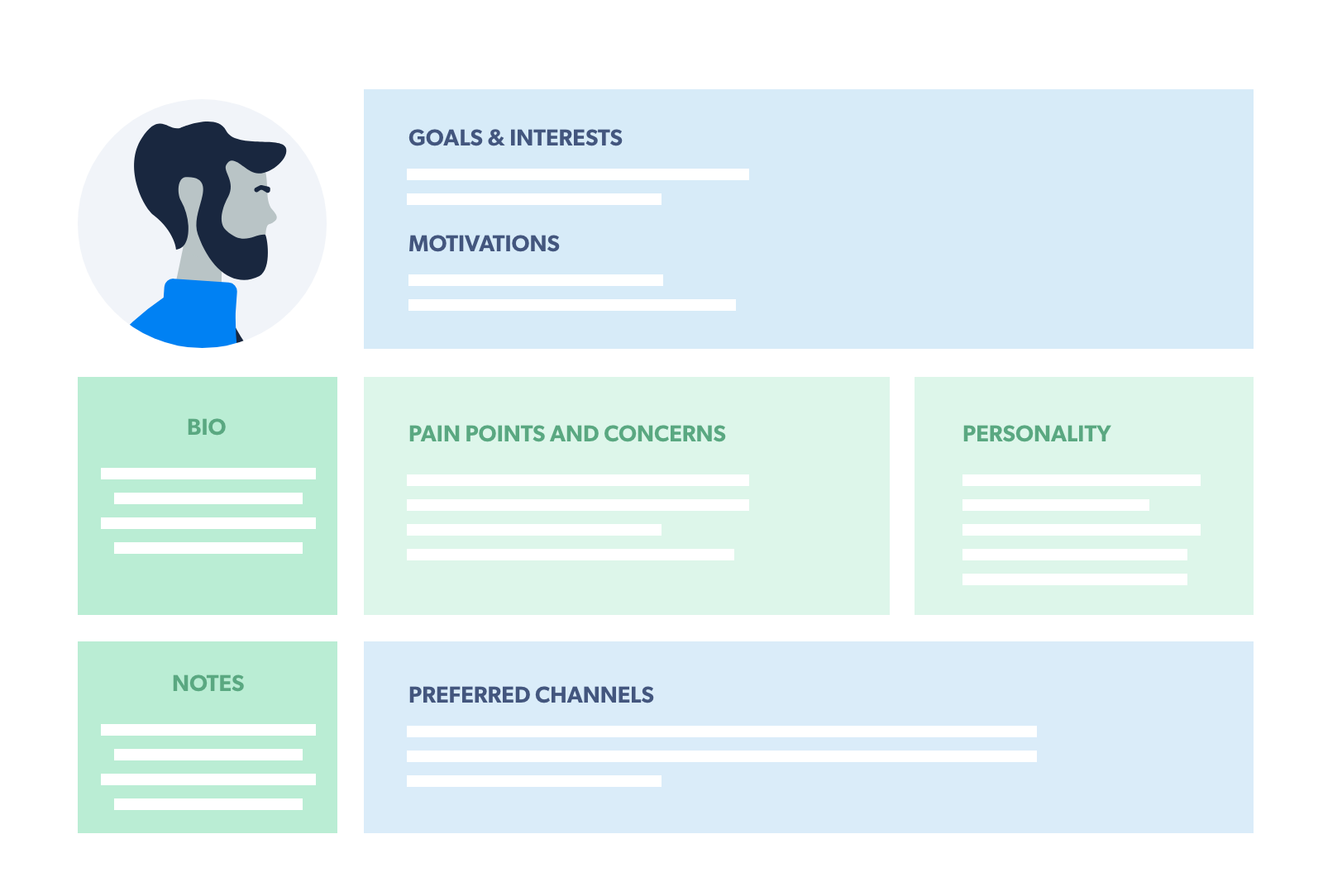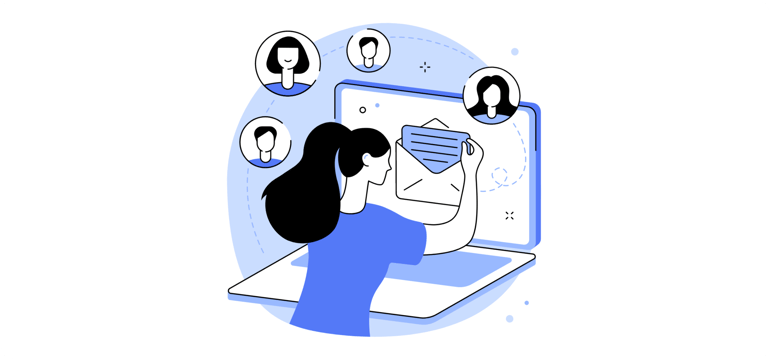By Miva | October 27, 2021

See why top ecommerce brands use Miva’s no-code platform to run
multiple stores, manage massive catalogs, and grow their revenue.
To thrive in ecommerce, it is important to understand your target audience. Modern consumers expect personalized services and a relevant buying process that’s tailored to their needs. A tried and true method of understanding your customer base is by creating buyer personas. When you direct your messaging and website offerings towards specific types of customers, it resonates with buyers in a way that makes them feel more connected to your products and your brand.
Whether your website is selling well or you’re struggling to connect with your ideal customers, buyer personas should be a crucial part of your ecommerce strategy. Well-defined, distinct, and relevant buyer personas will help you to optimize your online efforts, leading to increased traffic, higher conversions, more customer-driven product development, and greater growth opportunities.
In this article, we explain what to include in buyer personas and provide a starting point for creating your own personas based on common ecommerce buyer archetypes.
Buyer personas (also known as consumer personas) are detailed, fictional representations of your core customers based on real data and market research. Building archetypes of your ideal buyers helps you to understand them well enough that you can engage them and motivate them to purchase. Buyer personas are also beneficial in informing important decisions about your marketing efforts, channels, messaging, website content. and overall big-picture strategy.
To create effective consumer personas, you’ll need to first collect raw data about your customers, prospects, and leads and to identify patterns, trends, and commonalities.
Here are the steps you might take:
To create accurate and well-informed consumer personas, you need to base your representations on real-world data. You’ll want to conduct research, leverage surveys, and hold interviews with your current customers, prospects, leads, and any users outside your database who might be similar to your target audience. You also draw on what you know about the average ecommerce buyer and their motivations when creating your consumer persona.
What better place to get information than from those who are already your customers? Consider gathering information from the sales team on the types of things your customers are looking for and are interested in to help inform your personas.
In your research, you’ll want to gather and create demographic data (age, location, job title, income, etc.) for your personas. These objective attributes that can help you figure out the needs, wants, and interests of your ideal customers for your consumer personas.
Psychographic data (goals, pain points, and values) are just as important as demographic data—they help you to determine the reasons why customers come to your site, brainstorm ways to enhance the experience, and eliminate the obstacles they may have.
An effective buyer persona should include detailed pain points and challenges. What problems are your potential customers trying to solve? What obstacles are in the way of their goals? Pain points help provide a complete picture of your customers and can help inform your marketing efforts.
While pain points are problems that your potential customers are trying to solve, goals are things they are trying to want to achieve. Create goals for each of your personas to help you better understand their motivations, tie it into your products or services if applicable, and shape your marketing efforts.
Determine where your potential customers are getting their information from. Are they conducting online searches, looking for reviews on blogs, or reading information on social media? By determining these watering holes, you can find additional resources to inform your consumer personas and the content you create to get their interest
To succeed online, you need to reach the right customers with the right messaging on the right channels. Start by learning where your ideal customers are already spending time online—particularly where they are on social media and what content they consume. Check what your competitors are doing on social and search for top-performing content in your industry.
Once you’ve gathered your research, you’ll then want to look for commonalities that you can group into unique buyer personas. You’ll then take this group of characteristics and turn into a rea, complete customer that you can refer to and speak to. Give your buyer persona a name, a job title, a home, and other attributes. This will allow you to connect your products and services to this customers’ needs and to help them achieve their goals.
For example, here is a profile for a consumer persona named Golfer Gary:

As an online seller, you need to understand the different types of behavioral archetypes and the tactics, messaging, and content you can use to influence them. By customizing your store to align with these personas, you will be better able to maximize your reach, drive more sales, and boost customer engagement.
Here are seven core personas that you can use to classify your target buyers:
The value hunter is interested in items that are worth their spending, hoping to secure the best prices and deals on your website to justify their purchase. Get these shoppers interested in your brand by promoting a compelling value proposition that communicates the benefits and worth of your products. Drive the sale by offering a limited coupon, flash sale, or other exclusive website promotions. These offers help create a sense of urgency that motivates the value hunter to buy.
Researchers like to take time to learn about your products and their potential benefits. To appeal to these consumers, you’ll want to communicate how your products deliver on your brand promise, answer their questions, and explain how the products can add value to the shoppers’ lives. To help with their decision-making, you could leverage reviews, testimonials, and case studies (if applicable) to build trust and provide valuable social proof. Social proof is a powerful element that can influence shoppers to follow in the footsteps of those providing glowing reviews of your brand.
The brand devotee is a loyal promoter of your business. They are deeply familiar with your products, often to the point that they are repeat purchasers and brand ambassadors. Connect to this consumer persona by keeping them engaged with your company and consider ways to keep earning their trust, loyalty, and patronage. Be sure to provide them with an engaging user experience and consider offering perks like a loyalty program to keep them coming back to your website.
You can think of the social butterfly as a social media influencer who is interested in providing value and offering their knowledge to their family and friends. Make it easy for them to influence their network by personalizing product recommendations and providing easy tools for social sharing and discovery.
The replenisher is your company’s avid repeat customer who highly values your product and comes back to your website regularly to buy. To retain them, you’ll want to offer a convenient, personalized reordering experience. Consider implementing a subscription service to provide convenience and value and offering free shipping to drive sales. Treat the replenisher like a VIP and make them feel exclusive to maximize their lifetime value for your business.

Always on the go, this consumer persona is in tune with buying things online on their mobile devices. For this reason, they expect a convenient buying process and distraction-free path to purchase. On top of providing a responsive mobile experience, you can leverage local pickup options like click and collect to provide these shoppers with convenience and instant gratification.
The gifter is an enthusiastic buyer looking to purchase products for their network of friends and family. In your messaging, you’ll want to focus on the value of your products and how gifting them can provide the gifter with praise, benefits, and savings. The idea is to communicate your product as the best gift for their needs. Make it easy for the gifter to buy with gift guides, product categories, promotions, and gifting services.
Buyer personas get you to focus on customer priorities instead of company priorities, which allows you to create better messaging that addresses the goals, needs, behaviors, and concerns of your ideal customers.
Having clear and accurate archetypes in mind helps you to reach the right people and to deliver the messaging that contributes to the bottom line. With your consumer personas, you can build social strategies, blog content, and any other materials to inform, delight, nurture, and activate customers.
By understanding the goals, pain points, and motivations of your target customers, you’ll be able to personalize your marketing and speak directly to your target audience. In doing so, you’ll be build a real bond with real customers and establish loyalty, trust, and long-term relationships.
Creating consumer personas is an effective way to better engage your buyers, understand their needs, and motivate them to purchase. After you develop your buyer personas, the next step is to extend your reach and communicate with these personas through the right marketing channels. Learn how you can create an effective marketing engine to reach your buyers.

Love it? Share it!
This blog was updated on October 27, 2021.
Back to topNo worries, download the PDF version now and enjoy your reading later...
Download PDF Miva
Miva
Miva offers a flexible and adaptable ecommerce platform that evolves with businesses and allows them to drive sales, maximize average order value, cut overhead costs, and increase revenue. Miva has been helping businesses realize their ecommerce potential for over 20 years and empowering retail, wholesale, and direct-to-consumer sellers across all industries to transform their business through ecommerce.
Visit Website